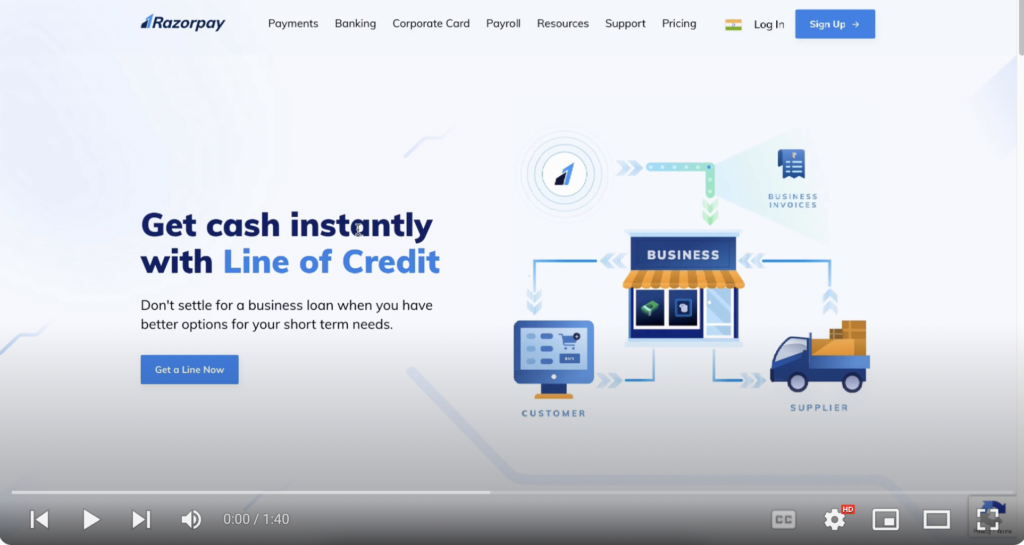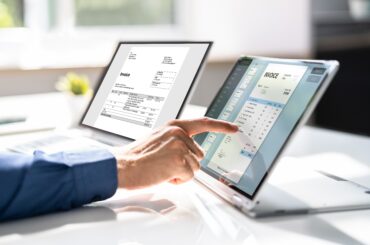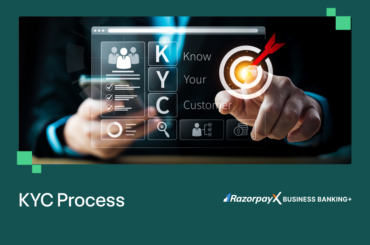In the world of business financing, having access to flexible funding can make all the difference when it comes to managing cash flow, seizing growth opportunities, and navigating unexpected expenses.
This is where a revolving line of credit enters the picture as a valuable financial tool. If you’ve ever wondered about the inner workings of a revolving line of credit and how it can benefit your business, you’re in the right place.
In this blog, we’ll take a deep dive into the world of revolving credit, uncovering what it is, how it operates, and the advantages it offers to businesses of all sizes
Table of Contents
Revolving line of credit meaning:
A revolving line of credit is a type of loan that provides borrowers with access to a set amount of funds that can be borrowed and repaid multiple times. It is different from a traditional loan because it does not require you to apply for a new loan each time you need funds.
Businesses often look for alternative financing means for capital expansion to ensure they do not struggle during an imbalanced business cycle. Hence, several businesses are considering a revolving credit line as their ideal capital source in this regard.
Why is revolving line of credit important for businesses?
Businesses in India’s MSME sector face major challenges in accessing formal credit due to being considered high-risk borrowers without collateral or assets. This lack of access to credit affects the ability of these businesses to contribute to a third of the nation’s GDP, as they struggle to meet their basic expenses.
A global study by BLinC Invest found that around 40% of small enterprises’ financial needs go unfulfilled. In India, the credit gap for this sector is estimated to be around ₹25 trillion.
Alternative financing solutions, such as a revolving instant credit line, have become popular as they can be availed without any security and offer immediate temporary liquidity for new businesses with limited capital. This type of loan also allows businesses to receive funds quickly without the risk of falling into debt.
If you want to apply for a revolving line of credit, click on the CTA below.
How does revolving line of credit work?
A revolving line of credit is a type of loan that allows a borrower to repeatedly access a set amount of funds. Unlike traditional loans, a revolving line of credit is not a one-time lump sum payment, but instead is a continuous source of funding that the borrower can access as needed.
Here’s how it works: A lender evaluates the borrower’s application and sanctions a specific credit limit. A revolving credit account is then opened in the borrower’s name. The borrower can then take out a portion of the permitted credit limit as a loan whenever needed during the business cycle.
The borrower can repeatedly access funds as long as the credit limit has not been exhausted. As the borrower pays down the balance, the amount, minus fees and interest charges, is automatically added back to the total credit available.
For a revolving line of credit, businesses only need to pay interest on the amount they have drawn, reducing their overall cash outflow. And unlike traditional loans, a revolving line of credit does not require collateral, making it an attractive option for businesses with limited assets.
It also provides businesses with a flexible and convenient source of funding that they can access as needed. Whether used for working capital or to handle unexpected expenses, a revolving line of credit can help businesses grow and succeed.
Advantages of revolving line of credit
Some crucial benefits of a revolving line of credit include the following.
-
Flexible repayment structure
A business may have an urgent requirement for working capital for various reasons, such as investing in growth opportunities or paying legal fees. In these situations, quick access to funds is essential. A revolving line of credit offers a solution by allowing a business to borrow and repay credit repeatedly over a short period.
-
Lenient eligibility parameters
Traditional banks look at several factors, like a business’s potential for success, its type, and credit score, when evaluating loan applications. A revolving line of credit, however, has simpler eligibility requirements and businesses that meet them can easily access funding regardless of other factors like a lower credit score, making it an ideal solution for small businesses.
-
Positive impact on company credit report
Making timely payments on a line of credit loan can help improve a business’s credit score and increase its creditworthiness, making it easier for the company to access future funding.
-
Levelling the competitive field
In order to compete in the global marketplace, it is important for businesses to have access to funding for advertising and marketing, which a line of credit can provide.
Disadvantages of revolving credit line
While revolving lines of credit offer numerous benefits for businesses, they also come with certain disadvantages that need to be carefully considered. Here are some of the disadvantages of a revolving credit line:
- Debt accumulation: The revolving nature of the credit line can lead to a cycle of debt accumulation, especially if businesses rely too heavily on the credit without a clear repayment plan. Continuously carrying balances and making minimum payments can result in a growing debt burden, which can be detrimental to the business’s financial health.
- Variable interest rates: Many revolving credit accounts have variable interest rates, which means that the interest rate can change over time based on market conditions. This introduces uncertainty into the cost of borrowing and could lead to higher payments if interest rates rise.
- Potential for over-borrowing: The easy access to funds with a revolving line of credit can lead to over-borrowing, where businesses take on more debt than they can reasonably manage. This can strain finances and hinder the ability to invest in growth opportunities or weather economic downturns.
- Limited use for long-term investments: Revolving credit is generally more suitable for short-term financing needs, such as managing working capital or covering immediate expenses. It might not be the best option for larger, long-term investments, as the revolving structure might not provide the most favourable terms for such purposes.
Can a revolving credit line help you build credit score?
Yes, revolving line of credit can help improve a business’s credit score if it is managed responsibly. Here’s how responsible use of revolving credit line can positively impact a business’s credit score:
- Payment history: Timely and consistent payments on revolving credit line accounts demonstrate the business’s ability to manage debt and meet financial obligations. Payment history is a significant factor in calculating credit scores.
- Credit utilisation ratio: This ratio measures the amount of credit being used compared to the total available credit limit. Keeping this ratio low, ideally below 30%, indicates that the business is not overly reliant on credit and is using it responsibly. A lower credit utilisation ratio can positively impact the credit score.
- Credit mix: Having a diverse mix of credit types, including revolving credit, instalment loans, and other forms of credit, can contribute positively to a business’s credit score.
- Credit history length: The longer a business maintains a positive history with revolving credit, the better it is for the credit score. A longer credit history demonstrates stability and responsible credit management.
Types of revolving line of credit for businesses
| Type of business revolving line of credit | Description and purpose |
| Traditional business line of credit | Standard revolving credit for day-to-day operational expenses, inventory purchases, and cash flow management. |
| Asset-based line of credit | Secured by company assets (e.g., accounts receivable, inventory, equipment) with credit limit based on asset value. |
| Seasonal line of credit | Provides additional funds during peak seasons to manage increased expenses and cash flow fluctuations. |
| Working capital line of credit | Designed to cover working capital needs, including operational expenses, supplier payments, and short-term liabilities. |
| Purchase order financing | Funds provided to fulfil customer orders by covering the cost of goods required to complete the order. |
| Inventory line of credit | Supports inventory management by providing funds for purchasing inventory; repaid as inventory is sold. |
| Contract financing | Offers funding for businesses working on large contracts, providing necessary capital based on contract terms. |
| Export-import line of credit | Assists businesses engaged in international trade by financing import and export activities, including associated costs. |
| Small business administration (SBA) line of credit | SBA-backed lines of credit designed to support small businesses with favourable terms and easier qualification. |
| Revolving credit card for business | Functions like personal credit cards, offering a revolving credit line for smaller expenses and day-to-day cash flow. |
| Vendor line of credit | Provided by suppliers to allow businesses to purchase goods and services on credit terms, maintaining supplier relations. |
| Equipment line of credit | Used to acquire or lease equipment needed for business operations, financing equipment purchases as required. |
| Franchise line of credit | Tailored to the unique financial requirements of franchise businesses, offering specialised credit solutions. |
Please note that this table provides a concise overview of the various types of revolving lines of credit for businesses and their purposes. The specifics of each type, including eligibility criteria, terms, and benefits, can vary based on the lender and the business’s financial situation.
Razorpay Line of Credit
As a top provider of payment solutions in India, Razorpay is the go-to source for small businesses and startups looking for alternative credit lending options. With no processing fees and a starting interest rate of 1.5%, companies can benefit from opening a line of credit with Razorpay. This line of credit offers easy access to funding up to Rs. 25 lakhs with a simple application process and fast disbursement time.
Steps to Apply for Razorpay Line of Credit
 You can apply for this facility by following the steps mentioned.
You can apply for this facility by following the steps mentioned.
Step 1: Head to the Razorpay website
Step 2: Select ‘Get a Line Now’ and opt for any of these two options as it suits you:
- ‘I am new to Razorpay’
- ‘I am already a Razorpay Customer’
Step 3: Input your crucial personal information, as required
Step 4: Provide the annual turnover or revenue range of your company
Step 5: Enter the necessary data about your enterprise
Step 6: Attach this enterprise’s credit report
Step 7: Attach the primary bank account statements of this enterprise
Step 8: You will have to submit the KYC records of your company via email or submit on the dashboard once the application has been accepted
Frequently Asked Questions
Q1. What are the pre-closure charges for Razorpay Line of Credit?
Ans. When you are using this revolving credit line, the platform does not levy any pre-closure charges or penalty.
Q2. How to estimate the EMI payable for Razorpay Line of Credit?
Ans. You can use the free EMI calculator on Razorpay platform to calculate your monthly payments.
Q3. Which businesses can opt for Razorpay Line of Credit?
Ans. A business can opt for a line of credit from Razorpay as long as it:
- Is operational for a year at the minimum
- Has an annual turnover of Rs. 20 Lakhs at the least





